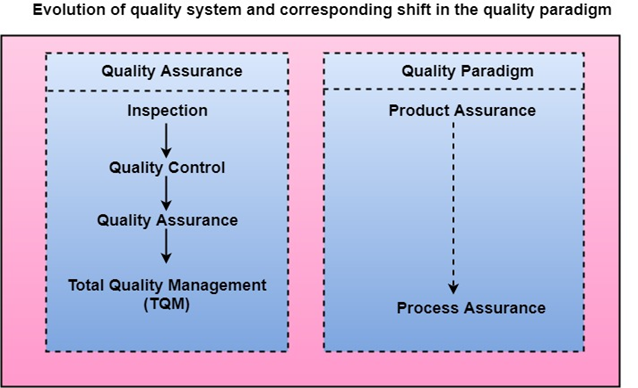Software QualitySoftware quality product is defined in term of its fitness of purpose. That is, a quality product does precisely what the users want it to do. For software products, the fitness of use is generally explained in terms of satisfaction of the requirements laid down in the SRS document. Although "fitness of purpose" is a satisfactory interpretation of quality for many devices such as a car, a table fan, a grinding machine, etc.for software products, "fitness of purpose" is not a wholly satisfactory definition of quality. Example: Consider a functionally correct software product. That is, it performs all tasks as specified in the SRS document. But, has an almost unusable user interface. Even though it may be functionally right, we cannot consider it to be a quality product. The modern view of a quality associated with a software product several quality methods such as the following: Portability: A software device is said to be portable, if it can be freely made to work in various operating system environments, in multiple machines, with other software products, etc. Usability: A software product has better usability if various categories of users can easily invoke the functions of the product. Reusability: A software product has excellent reusability if different modules of the product can quickly be reused to develop new products. Correctness: A software product is correct if various requirements as specified in the SRS document have been correctly implemented. Maintainability: A software product is maintainable if bugs can be easily corrected as and when they show up, new tasks can be easily added to the product, and the functionalities of the product can be easily modified, etc. Software Quality Management SystemA quality management system is the principal methods used by organizations to provide that the products they develop have the desired quality. A quality system subsists of the following: Managerial Structure and Individual Responsibilities: A quality system is the responsibility of the organization as a whole. However, every organization has a sever quality department to perform various quality system activities. The quality system of an arrangement should have the support of the top management. Without help for the quality system at a high level in a company, some members of staff will take the quality system seriously. Quality System Activities: The quality system activities encompass the following: Auditing of projects Review of the quality system Development of standards, methods, and guidelines, etc. Production of documents for the top management summarizing the effectiveness of the quality system in the organization. Evolution of Quality Management SystemQuality systems have increasingly evolved over the last five decades. Before World War II, the usual function to produce quality products was to inspect the finished products to remove defective devices. Since that time, quality systems of organizations have undergone through four steps of evolution, as shown in the fig. The first product inspection task gave method to quality control (QC). Quality control target not only on detecting the defective devices and removes them but also on determining the causes behind the defects. Thus, quality control aims at correcting the reasons for bugs and not just rejecting the products. The next breakthrough in quality methods was the development of quality assurance methods. The primary premise of modern quality assurance is that if an organization's processes are proper and are followed rigorously, then the products are obligated to be of good quality. The new quality functions include guidance for recognizing, defining, analyzing, and improving the production process. Total quality management (TQM) advocates that the procedure followed by an organization must be continuously improved through process measurements. TQM goes stages further than quality assurance and aims at frequently process improvement. TQM goes beyond documenting steps to optimizing them through a redesign. A term linked to TQM is Business Process Reengineering (BPR). BPR aims at reengineering the method business is carried out in an organization. From the above conversation, it can be stated that over the years, the quality paradigm has changed from product assurance to process assurance, as shown in fig. 
Next TopicISO 9000 Certification
|
 For Videos Join Our Youtube Channel: Join Now
For Videos Join Our Youtube Channel: Join Now
Feedback
- Send your Feedback to [email protected]
Help Others, Please Share









